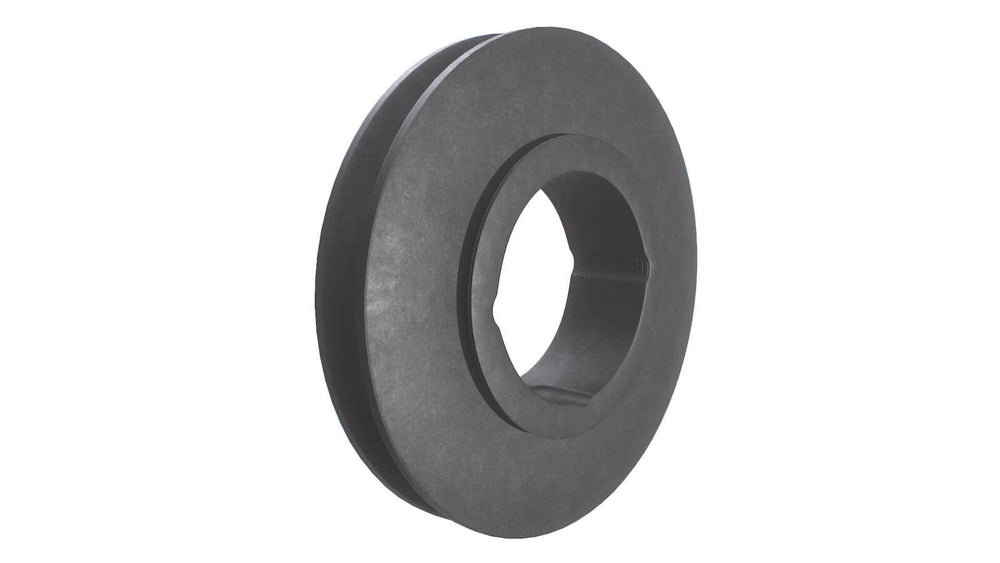
The Ultimate Guide to Taper Lock Pulleys
Pulleys are fundamental components in many industrial and commercial applications, facilitating power transfer and motion across various systems. Often overlooked in their importance, these devices play a dominant role in ensuring machinery operates efficiently.
Among the different types of pulleys, taper lock pulleys stand out for their unique design and proficient operation. In this guide, our experts at BCB Sales & Service will delve into the world of pulleys, focusing on the practical applications and benefits of taper lock pulleys in the industrial, plumbing, air-conditioning, refrigeration, and heating industries.
What is a Pulley?
A pulley is a simple machine consisting of a wheel with a groove along its edge, where a rope or belt can run to lift or move loads by applying force.
Pulleys have been used since ancient times, aiding in the construction of some of the most monumental structures, such as the Pyramids of Egypt. Their fundamental design has remained largely unchanged, showcasing their enduring utility and effectiveness.
What are the Different Types of Pulleys?
- Fixed Pulleys: Mounted in a fixed position and used to change the direction of the force applied. These are commonly found in wells and flagpoles.
- Movable Pulleys: These pulleys are attached to the load, reducing the amount of input force needed. They are often used in construction cranes and elevators.
- Compound Pulleys: These combine fixed and movable pulleys, providing a mechanical advantage. They are used in complex lifting systems, such as theatre rigging and rescue operations.
- Taperlock Pulleys: Their special design allows easy attachment and removal without needing keys or keyways, offering flexibility and ease of maintenance.
What are Pulleys Used For?
Pulleys are widely used in various industries to lift heavy loads, change the direction of force, and distribute weight. In machinery, they are essential for efficiently transmitting power and motion. For example, in the HVAC industry, pulleys help drive fans and blowers, ensuring proper air circulation. In plumbing, they assist in moving heavy equipment and materials, making installations and repairs more manageable.
What are Taper lock Pulleys?
A taper lock pulley features a conical-shaped bushing that fits into a matching tapered bore in the pulley. The specific design with the taper lock bush allows for a secure fit and easy installation/removal, offering advantages over traditional pulleys. Taper lock pulleys are known for their robust construction and ability to handle high torque, making them ideal for demanding industrial applications.
What is the Taper Lock Bush?
The taper lock bush is a key component of the taper lock pulley system, enabling the secure attachment of the pulley to the shaft. It ensures a tight fit, minimising slippage and enhancing performance. The design of the taper lock bush allows for quick and easy installation and removal, reducing downtime and maintenance costs.
Taper Lock Bush Sizes
Taper lock bushes come in various sizes to fit different shaft diameters. Selecting the right size is crucial for optimal performance. Common sizes include 1008, 1210, 1610, etc., which refer to the dimensions of the bush and the shaft it fits. Manufacturers provide detailed charts and guidelines to help users select the appropriate size for their specific application.
What are the Advantages of Taperlock Pulleys?
Taperlock pulleys provide superior performance with minimal maintenance. Their secure fit reduces vibration and wear, extending the lifespan of machinery and reducing maintenance costs.
Although taper lock pulleys may have a higher initial cost, they offer long-term savings by reducing downtime and upkeep expenses. Their durability and ease of installation contribute to overall cost-effectiveness. A comparative analysis of pulley systems revealed that taper lock pulleys resulted in a 15% increase in production efficiency over traditional keyed pulleys.
How to Install a Taperlock Pulley
- Step 1: Clean the shaft and bore of the pulley to remove any dirt or debris.
- Step 2: Insert the taper lock bush into the pulley bore, ensuring it is aligned correctly.
- Step 3: Align the assembly on the shaft, ensuring it is positioned correctly.
- Step 4: Tighten the screws gradually and evenly to secure the pulley. Over-tightening can cause damage, so it is essential to follow manufacturer torque specifications.
- Step 5: Check for a secure fit by rotating the pulley and ensuring no movement between the pulley and the shaft.
How to Remove a Stuck Taperlock Pulley
- Step 1: Loosen the screws and insert them into the removal holes on the taper lock bush.
- Step 2: Tighten the screws evenly to release the bushing from the pulley.
- Step 3: Use a puller tool to remove the pulley from the shaft if necessary. Be careful not to damage the pulley or shaft during removal.
- Step 4: Clean the components and inspect for any signs of wear or damage before reinstallation.
Explore Our Selection of Taper Lock Pulleys Available Online
Taperlock pulleys offer a reliable and efficient solution for various industrial applications. By understanding their benefits and proper installation techniques, you can enhance the performance and longevity of your machinery.
Explore our selection of taper lock pulleys available online, or for more information on the different types of pulleys we offer, contact us at BCB Sales & Service today.
